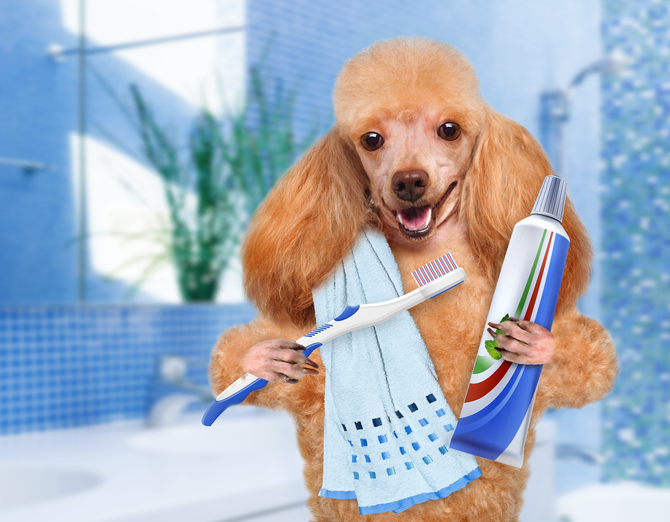
Doggy breath in many cases can be the stuff creates nightmares. If your dog’s breath makes you gag, listen up! It could be an indication of poor dental health, and quick action could mean the difference between a happy, healthy pet and one that’s plagued with illness and poor health throughout its life. You may think you know everything there is to know about pet dental care, but just in case you don’t, here are five things you thought you knew about pet dental care.
#1 Feed Dry Food to Keep a Pet’s Teeth Clean
While it’s true that wet (canned) foods contribute to plaque buildup faster than dry foods, dry pet foods are not a replacement for regular dental cleanings. The fact is, most dogs and cats don’t chew their food well enough for dry food to actually scrape the teeth clean. Dental treats and rawhide chews that require a pet to chew and shred are great, but they, too, are not a substitution for regular teeth cleanings.
#2 Pet Dental Care Just Isn’t That Important
On the contrary, pet dental care is just as important as your own dental health. As a matter of fact, it is estimated that more than 80 percent of dogs and 70 percent of cats develop pet gum disease before they even reach three years of age. This is because nearly two-thirds of pet owners have no clue how to care for their pets’ teeth. As a result, dental problems such as gum disease, periodontal disease, gingivitis, and abscesses can lead to more serious health concerns if not addressed. Vets recommend brushing your pet’s teeth once a day and scheduling annual cleanings.
#3 Bad Breath is the Only Problem Caused by Poor Dental Hygiene
Bad breath might be the most prominent symptom of poor pet dental care, but in reality, not taking care of your pet’s teeth on a regular basis can lead to a miserable, sick pet. Sore gums and loose teeth make it difficult to eat, and bacteria from periodontal disease can travel to the heart, lungs, kidneys and liver and cause life-threatening infections.
#4 It’s too Hard to keep my Pet’s Teeth Clean
While it’s easier to begin proper dental care when your pet is a puppy or kitten, just about any pet will get used to regular brushing. As with anything new, you just have to take it slow and gradually get them used to the tools and having their mouths manipulated. If you use a beef (for dogs) or tuna (for cats) flavored toothpaste, your pet will be more apt to let you do what you have to. Even with regular, daily brushings, you should schedule an annual, thorough cleaning with your pet dentist.
See Also: Dental Hygiene For Senior Dog Teeth
#5 My Pet will let me know if his Teeth Hurt
Fear of hurting your pet’s teeth is a huge mistake pet owners make. Most pets show few to no signs that their teeth hurt at all. It’s important to inspect your pet’s teeth on a regular basis to identify problems before they become an issue. Don’t rely on your dog or cat to “tell” you with signs of difficulty eating, excess drooling or bleeding gums because more often than not, you’ll never know he has a problem.
Practice good pet dental hygiene with your pet and make sure to get him to the vet once a year for a good cleaning. You’ll add years to his life, and he’ll be much happier and healthier in the long run.
Image Source: Thinkstock












[…] may seem like an odd question for those who have never owned a pet rat or mouse, but is dental care necessary? For those who have owned one of these little guys, a quick “yes” probably […]